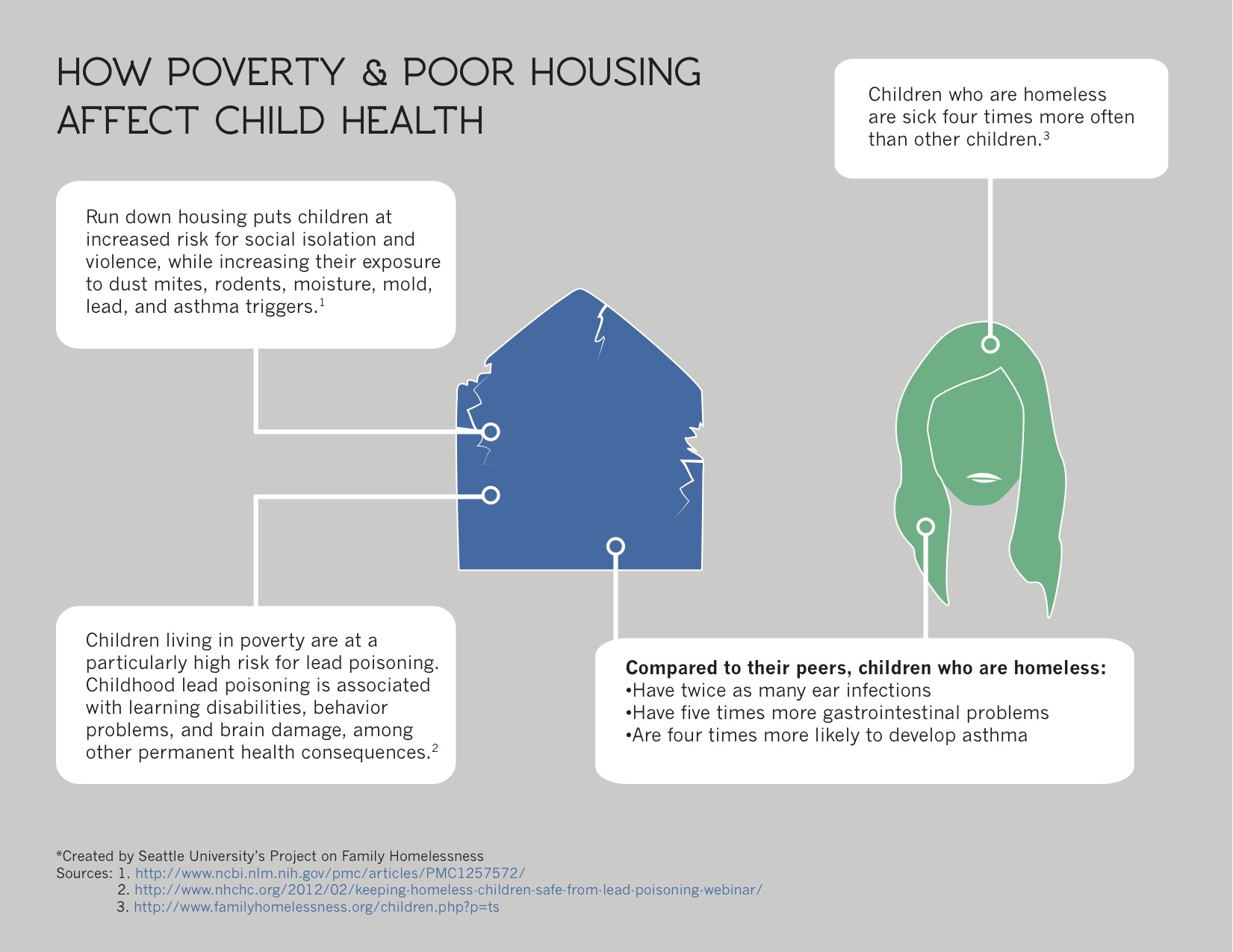The health and well-being of people is strongly related to the housing conditions that they live in. The below infographic, created by Seattle University’s Project on Family Homelessness, illustrates the link between poor housing conditions and it’s affect on children’s health.
People living in homelessness or poverty are at greater risk of becoming seriously ill. Children who are homeless are four times more likely to become seriously ill than other children: they have four times as many respiratory infections, twice as many ear infections, five times more gastrointestinal problems and are four times more likely to have asthma.
Children living in poor housing conditions are also at greater risk for lead poisoning. Lead poisoning is largely caused by the presence of dust, as well as from peeling paint and surfaces coated in a substance containing lead. Pregnant mothers living in housing where they may be at risk of lead poisoning need to be monitored, as lead can pass from a mother to her unborn baby. Lead consumption by infants and children can lead to brain damage, learning disabilities, and even behavioural problems that are only noted later in development.
The infographic also states that rundown housing puts children at increased risk for social isolation. The term social isolation refers to a lack of contact with others, and usually results in feelings of loneliness, helplessness and depression. For example, a child may find it difficult to make friends at school if he/she is labeled as being homeless.
Children living in poverty and poor housing are also more likely to witness violence compared to children in the general population. Street youth are victimized more frequently than youth living in stable housing. This is largely because of the vulnerabilities that these youth, especially girls, face when homeless. The gaps present in the shelter system extend far beyond housing services themselves, as there is also a need for more specialized supports like counseling, educational support, and after-school activities for these youth. Homeless children have the right to the same opportunities and security as their peers.


